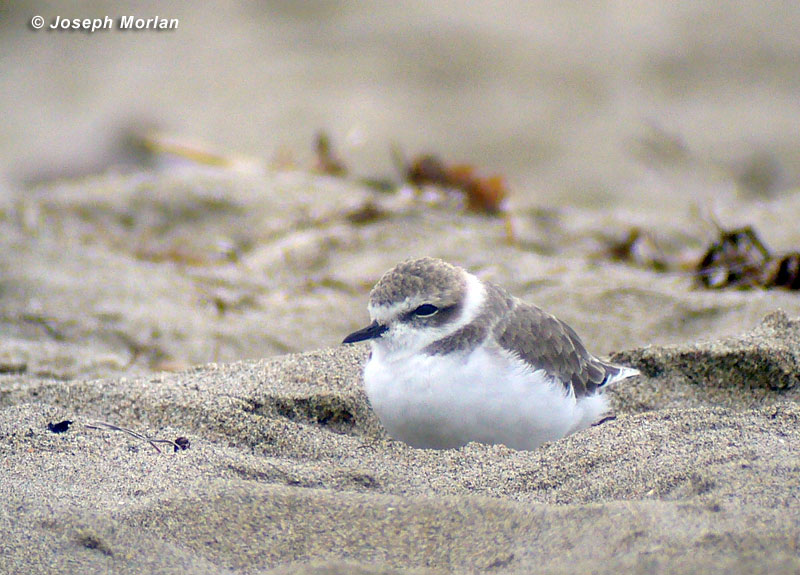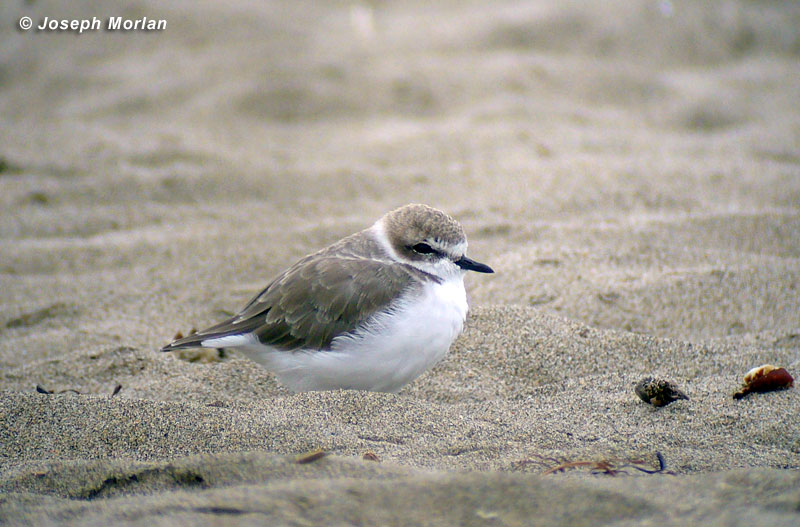

The Snowy Plover is now split into two species, one each in the Old World and the New World, based on recent evidence from genetics, morphology, plumage, and vocalizations. The English name of the Old World species (Charadrius alexandrinus) is changed to Kentish Plover.
Snowy Plovers are local breeders along beaches and dunes on the West Coast where they are threatened by human disturbance and predation by introduced Red Foxes. A significant breeding colony occurs at Pajaro Dunes and during the nesting season the area is fenced off to prevent human instrusion. Nests are further protected from predation by "exclosures" which prevent predators from gaining access. These birds can be difficult to spot because of their habit of settling into depressions in the sand such as footprints and tire tracks.
The recently published 6th edition of the National Geographic Field Guide has retained the old name C. alexandrinus in error. Two subspecies are normally recognized. With the new scientific name, this North American race is now nominate C. n. nivosus. The slightly larger, C. n. occidentalis occurs along the Coast of Peru and Northern Chile. The National Geographic Guide illustrates a paler Gulf Coast race, C. n. tenuirostris; however neither "Birds of North America" nor the Clements checklist consider it valid.
Digiscoped with Panasonic DMC-LZ5 | Nikon FieldScope III | 30XWA |hand-held (no adapter)